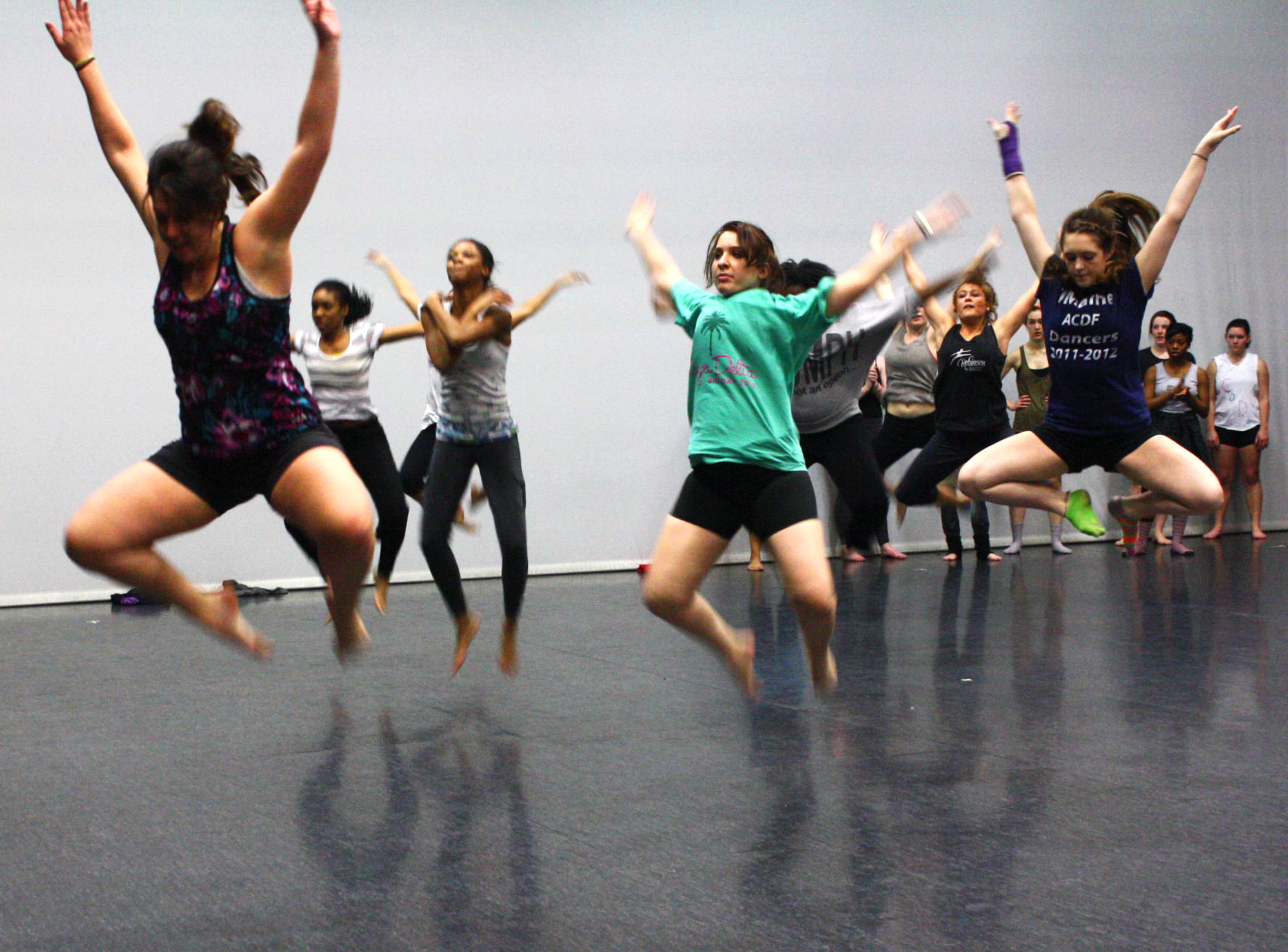Last week, Connecticut College hosted the American College Dance Festival for the annual four-day New England regional conference of classes and concerts. Throughout the festival there are adjudicated concerts in which each school in attendance is allowed two
dances for submittal. At the festival’s finale, the adjudicators choose three pieces to move on to a national finalist group where they there compete.
This year’s adjudicators were dance filmmaker Victoria Marks, experimental performance artist Keith Hennessey and vogue researcher Derrell Jones, all choreographers in their own right. Conn staff chose pieces by Chloe Spitalny ‘13 and Audrey Maclean & Katie McGrail ‘12 from the Fall Dance Club performance to show at the festival.
The festival opened with a concert of the adjudicators’ work to introduce the students at the conference to who exactly the honorary audience members were and to contextualize the adjudicators’ feedback with his or her personal work.
A film by Marks and Margaret Williams film featured a cartoonish green patch of faux grass as a stage for two soloists who dance on the green and are hung above it by harness. Their legs hung in a way that provoked the interesting parallel of fantastical levitation and grim hangedness.
The piece’s third character came as a surprise: a man in a mothy old panda suit. The performer was Shawn Hove,
Conn’s dance tech director, who ran the shows that week. The performances by Marks, Hennessey, Jones and guest artist Nicholas Leichter (and a pre-show by a Bob Dylan-impersonating Clare Byrne) prove that the adjudicators had an expansive knowledge of movement and originality.
The following morning, the established dance writer Marcia Siegel taught a class on the art of transcribing dance theoretically, critically and honestly. To transcribe movement is as difficult as it is counter-intuitive. Movement lives in a dimension unconnected to language; movement sends potentially provocative, emotive and clear messages remains entirely languageless.
Siegel described dance as her lifetime subject. The lecture-workshop class focused on Siegel’s musings on such a specific craft: avoiding preconceptions going into a performance, writing for yourself and not the dancers or readers and practicing as a few examples. Her
status in the current dance community is clear: she is honest and she is herself — appreciated and endearing qualities in a critic and historical writer of an art form so difficult to transcribe. “I can’t speak for the critic, because I am only this critic,” she said. “An individual critic is what an individual is.”
A luncheon later that day featured a question and answer session with Hennessey, Jones and Marks. They answered inquiries about their influences, techniques on stage presence and advice on pursuing dance as a career. The latter question sparked interest from across the crowd of dancers chowing down on turkey sandwiches and potato chips. When asked who planned on dance as a career path, many audience members’ hands shot up.
As Hennessey brought up in his politically-inspired piece from the opening adjudicators showcase, the dance industry is not exactly the most lucrative business to dive into after college. All three, though, prove that with persistence and eagerness, an engaging career in the arts is possible. Jones, for example, lived in New York for twelve years performing and catering “till the day I left.”
“That time in New York was essential in molding me … Value what’s happening in the moment,” he said.
Marks found her place in New York City as a janitor at Dance Theatre Workshop. As she graduated to working the sound board, Marks watched choreographer after choreographer, piece after piece, calling it “one of the most important parts of [her] education.”
Both Marks and Hennessey discussed their experiences with dancer disillusion. “Many of my favorite dance makers have quit dance once. Me too. It hurts too much in my brain and in my heart,” Hennessey said. He is quick to remark, though, that re-emergence into dance can reinvigorate one’s perspective better suited for survival.
On Saturday night, the festival came to a close with ten choice pieces from the festival’s original forty-five. From these pieces, three were chosen to move on to the national festival. University of Vermont student Dan Yablonsky stole the show with a self-choreographed solo. The piece, however, came across a bit more like a duet as a scratched and scraped dark green five-to-six-foot-tall
file cabinet accompanied him onstage. He wore clashing protective gear: a football helmet, straps around his chest, kneepads and boots. He thrashed and goggled in lanky glory against the file cabinet. At the piece’s climax, Yablonsky slammed open three drawers onto his head before he precariously mounted the unsteady cabinet. A baby in the audience began to cry out, the soloist’s cringe-worthy crash to the floor clearly disturbing to the confused, wailing child. Few in the audience did not wince, flinch or laugh nervously. The risk was not fake; it was not theatric or posed or practiced. Though the piece lost some novelty on second watch, I
loved watching those around me who had never experienced the piece react with jubilee and discomfort.
That discomfort in the audience during Yablonky’s piece is exactly why ACDFA is an important event for those who study dance. The festival brings together blooming artistic ideas that cannot otherwise be expressed across the region. Though the more commercially
entertaining pieces with classic lines and extensions and body types are nice, it is the new and the weird and the unfamiliar to the point of shock or ugliness that must be shared to keep college dance regenerated and imaginative.









